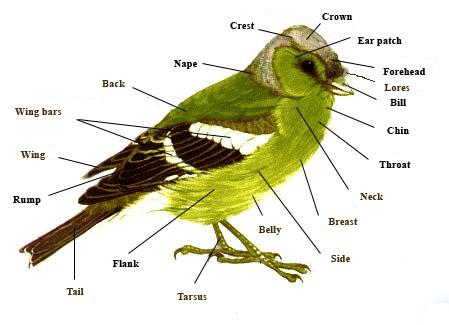
Give the salient features and five examples of class Aves.
Answer
574.8k+ views
Hint: The class Aves includes the vertebrates belonged to the kingdom Animalia and the phylum Chordata. It includes about 9000 species in them and are adapted to fly. The organisms that belonged to the class Aves are also called birds.
Complete Answer:
Salient features of Aves:
The following are the salient features and the nature of the species belonged to the class Aves.
(1) These birds do not have mouths and teeth and the jaws of them are covered with the beak which helps them to pick their food.
(2) They possess feathers or wings for the purpose of flying and they are warm blooded animals.
(3) These birds have the air cavities in their body and also with the completely ossified skeleton that helps them to maintain the buoyancy in the air to fly.
(4) Their body has the parts including head, neck, trunk and tail regions.
(5) The forelimbs of these birds are modified as the wings for flying and the limbs are paired.

(6) The sweat glands are absent in the birds and the oil glands are located in the tails.
(7) The ear pinna of the birds is rudimentary or undeveloped in nature.
(8) They are egg laying species with the four chambered hearts in them.
The examples of the birds that belonged to the class Aves are sparrow, crow, doves, ducks, pigeons, flamingo etc. Ostrich is the only bird that does not fly and belongs to the class Aves.
Note: The Aves are classified into two types. They are archaeornithes and neornithes. Archaeornithes birds are extinct birds with teeth and a long tail. Examples of these birds are Archaeopteryx. Neornithes birds are the birds with the absence of teeth and very short tails. Examples of these birds are penguins, ducks, etc.
Complete Answer:
Salient features of Aves:
The following are the salient features and the nature of the species belonged to the class Aves.
(1) These birds do not have mouths and teeth and the jaws of them are covered with the beak which helps them to pick their food.
(2) They possess feathers or wings for the purpose of flying and they are warm blooded animals.
(3) These birds have the air cavities in their body and also with the completely ossified skeleton that helps them to maintain the buoyancy in the air to fly.
(4) Their body has the parts including head, neck, trunk and tail regions.
(5) The forelimbs of these birds are modified as the wings for flying and the limbs are paired.

(6) The sweat glands are absent in the birds and the oil glands are located in the tails.
(7) The ear pinna of the birds is rudimentary or undeveloped in nature.
(8) They are egg laying species with the four chambered hearts in them.
The examples of the birds that belonged to the class Aves are sparrow, crow, doves, ducks, pigeons, flamingo etc. Ostrich is the only bird that does not fly and belongs to the class Aves.
Note: The Aves are classified into two types. They are archaeornithes and neornithes. Archaeornithes birds are extinct birds with teeth and a long tail. Examples of these birds are Archaeopteryx. Neornithes birds are the birds with the absence of teeth and very short tails. Examples of these birds are penguins, ducks, etc.
Recently Updated Pages
Why are manures considered better than fertilizers class 11 biology CBSE

Find the coordinates of the midpoint of the line segment class 11 maths CBSE

Distinguish between static friction limiting friction class 11 physics CBSE

The Chairman of the constituent Assembly was A Jawaharlal class 11 social science CBSE

The first National Commission on Labour NCL submitted class 11 social science CBSE

Number of all subshell of n + l 7 is A 4 B 5 C 6 D class 11 chemistry CBSE

Trending doubts
10 examples of friction in our daily life

One Metric ton is equal to kg A 10000 B 1000 C 100 class 11 physics CBSE

Difference Between Prokaryotic Cells and Eukaryotic Cells

1 Quintal is equal to a 110 kg b 10 kg c 100kg d 1000 class 11 physics CBSE

State the laws of reflection of light

Explain zero factorial class 11 maths CBSE




